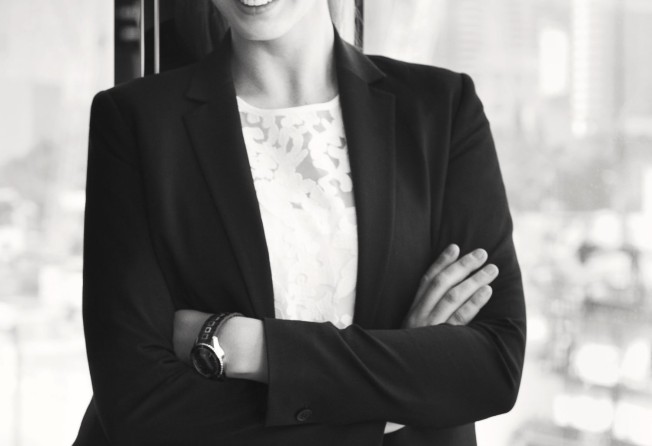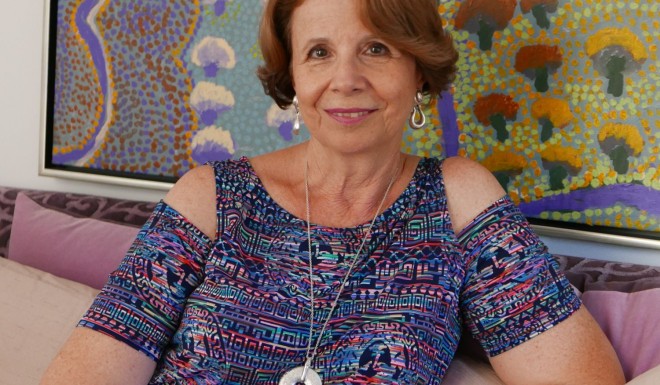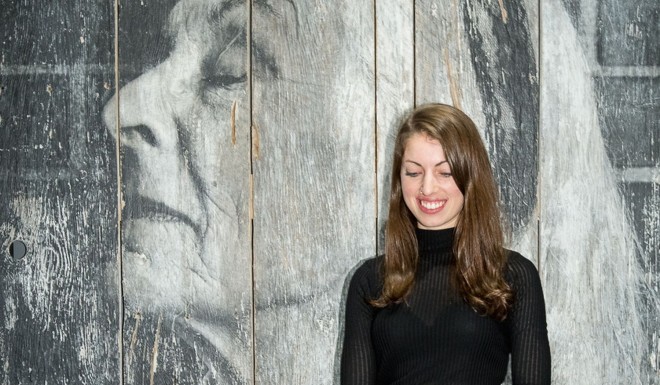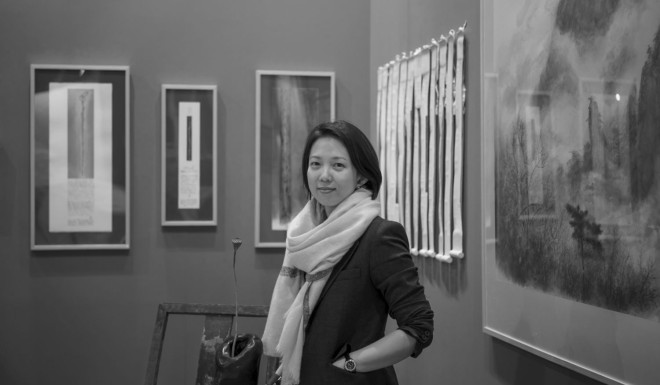Leading Ladies in Hong Kong's Art Scene
The women of art about their work as art administrators, their favorite kinds of artwork and how they see the artistic future.

Maree di Pasquale
Fair director, Art Central
Working between her hometown in Melbourne and Hong Kong, Maree Di Pasquale has gone from developing Middle Eastern art programs in Abu Dhabi to developing Sydney Contemporary—the city’s first international art fair—to launching Hong Kong’s first edition of Art Central last year.
I love creating art. At university I quickly learned that I wasn’t necessarily as good as the other artists, but what I loved about that studio environment was working directly with them.
I’ve always been interested in Greater Asia—Asia, the Middle East and India—in the work itself, but also in the markets; they’re all very emerging markets which allow a process of education and audience development.
Hong Kong has come a long way. I’ve worked with the ArtHK [which became Art Basel] team for six or seven years. Seeing the change from then to now is incredible. It’s generated a whole new wave of Hong Kong artists who have been influenced by that market change. I think ArtHK had a lot to do with that, but the non-profit art spaces—Para Site, Asia Society, Asia Art Archive, and [Hong Kong artist Lee Kit’s] new space Things That Have Happened—have had even more to do with that.
It’s always tough for me to pick favorites, but I did recently purchase a piece by Claire Lee. I love buying art. I certainly won’t call myself a collector but I enjoy supporting artists at the emerging end. The work that I am drawn to is more about artists who have a cultural and heritage statement.
Certain work sells, commercially. That said, I believe that Hong Kong has fostered a very strong base of collectors who buy good work because it’s good work. My prized piece? It’s a no-name artist. I came across this small edition piece by an artist of Palestinian heritage when I was working in Abu Dhabi. It’s a text based work, with a simple statement, “Me, Myself and I.” It’s beautiful, it was cheap, and it’s my most prized artwork.
The best kind of art can change society. Art in all its forms is that strong.

Sarah Benecke
Co-founder, Asia Contemporary Art Show
Australian native Sarah Benecke began her career in media in Hong Kong in 1979. Dissatisfied with retirement in 2010, she co-founded Asia Contemporary Art Show with former colleagues Douwe Cramer and Mark Saunderson and launched it in 2012. The art fair is currently in its eighth edition.
I started collecting art in Hong Kong—but it got to this point in my life when I wanted to start something different. As a young expatriate living in Hong Kong, on weekends I would wander around Hollywood Road, where most of the art galleries gathered 20 years ago. At that time it was much more reasonably priced and more art galleries could afford the rent.
I’m an early-stage collector. The problem with doing art shows is that you end up spending more money on art than you do making money from them!
The current art shows [here] have very different positioning. We all admire Art Basel, but those are very top artists at very top prices, [aimed at] a very small group
of people. That is why we try to position ourselves to be more accessible to people. We feature talented emerging artists. We’re very proud of the fact that we provide that opportunity.
If Hong Kong keeps doing what it does, which is providing a free and open market, and the Tourism Board keeps supporting the development of the art scene, it will attract a greater audience.
A Korean artist I’m particularly liking at the moment is Ji Yo-sang, who does traditional ink painting on very beautiful Korean paper. I hang his paintings in my hallway. The best kind of art can inspire. It can give you a sense of excitement but also a sense of serenity, depending on the piece.

Lauren Every-Wortman
Co-founder and curator, Hong Kong Contemporary Art (HOCA) Foundation
Lauren Every-Wortman started the HOCA Foundation after two years at Sai Ying Pun street art gallery Above Second, and she continues to curate and bring large scale public artworks to Hong Kong.
I really love museums. They are, for me, almost sacred spaces. I was struck by the problem of Hong Kong not really having that many of them. Right now the Hong Kong Museum of Art is under renovation, and it will be in phases for the next 10 years. [West Kowloon Cultural District art hub] M+ has been constantly pushed back: It’s putting out exhibitions, but it’s not currently at the scale that it’s hopefully going to be one day.
One of the things that we wanted to do at HOCA Foundation was to be an intermediary: To at least have something for people to see while we’re waiting for these other things.
My favorite artist is [American light and space artist] James Turrell. The first time I saw his art in person was when I was 12 or 13. I remember going into one of his sky rooms and sitting completely in awe, that something so simple could have so much meaning to it.
I wish I was a collector. I own a lot of limited edition prints, and a couple of originals, but I don’t have the funds to properly invest in art yet. I like having small sentimental things in my house, things that artists have given to me after working with them. I have an Invasion Kit from [French street artist] Invader—he makes limited edition kits that come with all the tiles to create your own piece. I haven’t made it yet, I’m waiting on the exact location to do it, but that’s my favorite piece right now.
I really like street art in the sense that it reaches a large audience, it’s easily graspable and it’s a very democratized form of art.
Hong Kong artists have been getting more limelight, but what is unfortunate is that artists still have to go or study abroad to be recognized and make connections. That won’t really change until the education system changes. There need to be stronger art programs in universities and high schools. I know that’s financially difficult for a lot of schools, but I think it’s an important way to help grow the need for culture that Hong Kong obviously wants. Right now, it seems that everyone is investing in the top layer, but no one’s investing in the kids. They’re the ones who are going to grow up to be artists, they’re the ones who are going to be starting the galleries.
The best kind of art can change your perception of reality. It can change the way you view your daily life or add an experience to it that then changes the way you’re feeling that day. Or it can change your opinion about something in the world.

Yifawn Lee
Founder, Asian Art Hong Kong
Art and antiquities festival Asian Art Hong Kong returns for its third year under the auspicies of its founder Yifawn Lee, who is also the publisher of Orientations Magazine. She’s hopeful that Hongkongers can learn to appreciate the old with the new in art.
I remember going to the Metropolitan Museum of Art on the weekend and my favorite parts were where they transplanted whole buildings from another culture into the museum. The most beautiful part of The Met is an area where they have floor to ceiling glass, and on one side you have the [Egyptian] Temple of Dendur and on the other side you have a view of Central Park. You go there and you can imagine yourself in these exotic locales.
I don’t think it’s limiting to look at the past, because in contemporary works a lot of artists do engage in the past. But that doesn’t have to be such a dichotomy between antique and contemporary art. There’s definitely more buzz and excitement about the contemporary art field.
But if you look at it, actually, Hong Kong has a longer history of antiques: both galleries and collecting. There are groups like the Min Chiu society, founded in the 1960s—they’re a group of like-minded gentlemen collectors from Hong Kong and Shanghai who get together to discuss their collecting activities. They have their own club house on Bowen Road, which is not for the general public. People are just not as aware of antiquities because they’re not as approachable, and this is what we hope to change with Asian Art Hong Kong.
Maybe just for Hong Kong, the galleries are not that media and market savvy—a lot of them don’t have websites, so they’re harder to approach and find. We’ve done gallery tours, and it’s quite cute because the general public gets an impression that gallerists are unapproachable. But if you go to their galleries and get them started, sometimes you can’t get them to stop! But the most rewarding moment is taking student tours to the galleries and seeing the participation between them.
It’s important to balance going to galleries with visiting museum exhibitions. Museums may have a good [range], but none of the objects are that high quality. At galleries, you can see the best of one type of object, but they may not necessarily have the continuation of history.
I wouldn’t call myself a collector, as I’m not that focused, I just tend to buy whatever catches my eye. I like naturally found objects and soothing pieces. Things that are not so jarring that you could live with them and you wouldn’t be frightened at 2am. My most recent purchase was a small painting by Gade, a Tibetan artist. He uses many bright colors. They’re very whimsical.
The best kind of art can evoke any type of emotion. Everyone’s an emotional being.